
This industry whitepaper looks into challenges faced by Accounts Payable (AP) professionals across multiple industries in North America, targeting companies that have either recently adopted or are in the process of adopting cloud-native and on-premise financial management software.
With this, AP professionals can gain an in-depth insight into future investment trends for AP processes as well as the shift in priorities for this arena.
Additionally, the current state of AP technology is evaluated by addressing critical key performance indicators (KPIs) financial teams should be tracking. Finally, this whitepaper considers how AP professionals benefit from adopting and leveraging AP technology into their financial processes.
This whitepaper is designed to analyze and understand the current state of technology utilized by AP professionals. Data collected from the industry survey are based on companies that have adopted or are in the process of adopting cloud-native and on-premise financial management software and conducting their AP processes manually.
By exploring the future state of technology for AP-specific functions, AP professionals can forecast what to expect for years to come.
Our research questions were focused on understanding the following:
Many companies have considered moving towards paperless processes in the past two decades, particularly since the acceleration of the digital transformation of the early 2000s. The evolution of AP over the past 30 years has shifted from slow, time-consuming, and error-prone processes to digitized systems, leading to increased operational efficiencies.
However, the shift towards automation has since moved beyond time-saving and efficient data management processes. As more companies adopt finance process automation to reduce up to 40% of time spent on day-to-day tasks, this provides them with more time to spend on value-adding efforts such as financial management, data analysis, and operational optimization.
Modern AP automation provides companies with enhanced possibilities of a genuinely touchless invoicing process, offers mission-critical financial data insight to improve cash flow management and spend visibility, promotes strategic sourcing, and improves a company's overall financial controls.
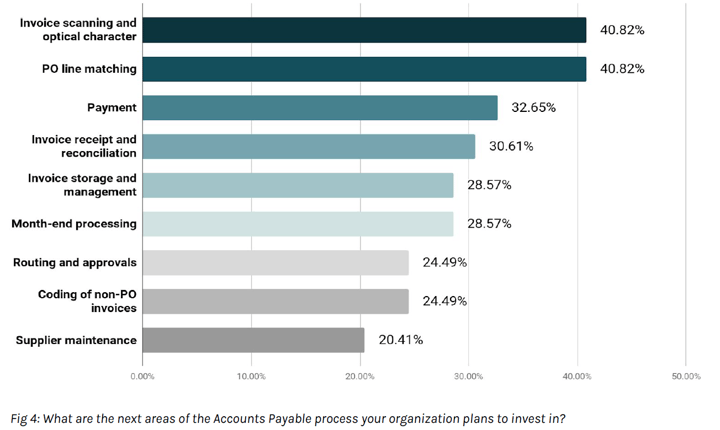
Invoice scanning and optical character recognition (OCR), as well as PO line matching, seems to be the highest priority for organizations planning to invest in AP technology for 2021 with participants indicating both their worth.
While OCR is simply the use of technology to convert different physical documents into digital prints, invoice scanning provides AP professionals with automated data entry capabilities particularly allowing them to transfer all forms of data, from invoices to reports to their Enterprise Resource Planning (ERP) system.
Both areas help companies:
PO line matching on the other hand, provides companies with the ability to automatically match their invoices with PO information. This reduces time spent on matching lines and the risk of being charged twice for the same item.
With payment coming third in line for priority, followed by invoice storage and management in fifth, it will be interesting to see how each company brings together their way of organizing and managing all aspects of their payables process.
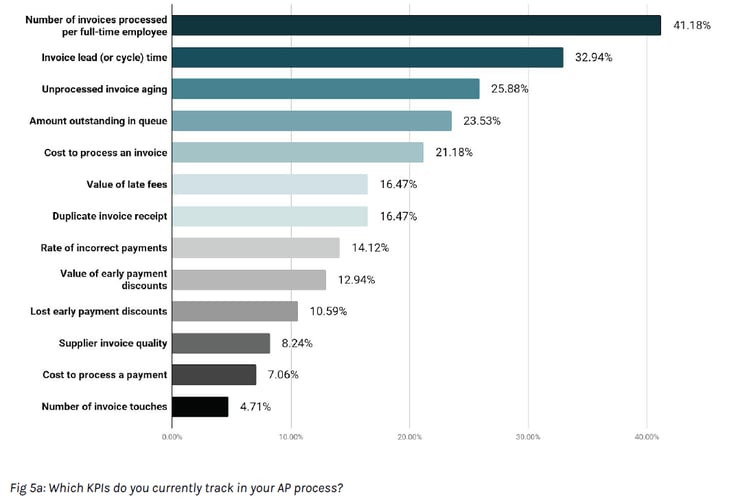
Participants responded that of the currently tracked KPIs this year, the number of invoices processed per full-time employee (FTE) held the highest vote amongst companies, followed by invoices lead (or cycle) time and unprocessed invoice aging in third.
While calculating the number of invoices processed per FTE helps companies evaluate how efficiently their financial departments process their transactions, invoice lead (or cycle) time tracks the average time it takes to process an invoice. Unprocessed invoice aging on the other hand, helps categorize outstanding invoices.
Tracking these KPIs can help companies evaluate their overall invoice processing performance.
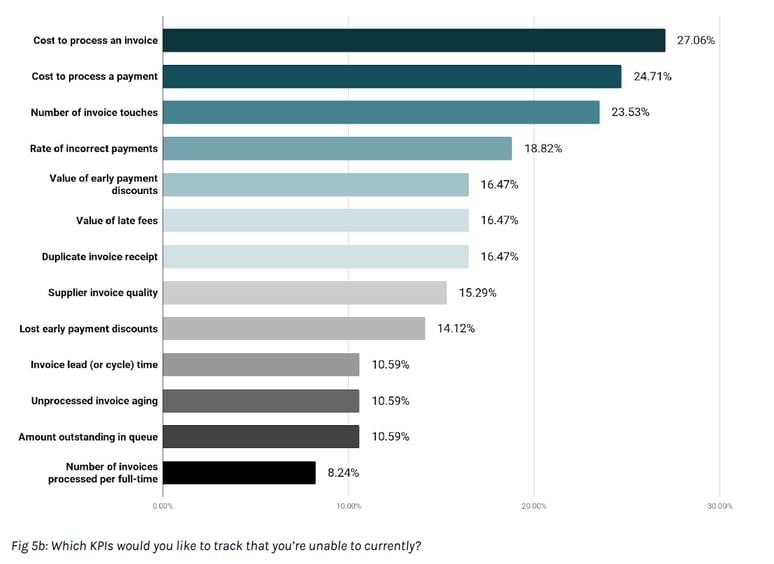
When asked which KPIs companies are wanting to track but are struggling to do so, cost to process an invoice came up as the most challenging KPI to track despite it being the fifth most tracked KPI this year (See Fig 5a).
The cost to process a payment was the second least tracked KPI in 2020 (See Fig 5a), but held the second highest regarding KPI that participants wanted to track. Coming in third was the number of invoice touches, despite being the least followed KPI in 2020 (See Fig 5a), showing a shift in priority of what companies are looking to track.
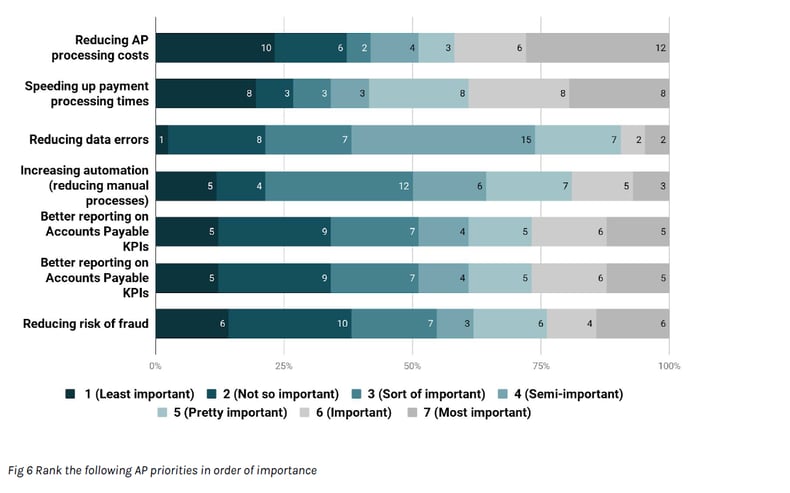
When asked to rank the following priorities, reducing AP processing costs came up as the highest votes between the ranges of important to most important, with speeding up payment processing times coming in second.
Moving from manual to automated AP processing via an AP automation software can help these companies to reach these two priorities.
Curiously however, participants indicated that reducing the risk of fraud as lesser priority voted between least to not so important.
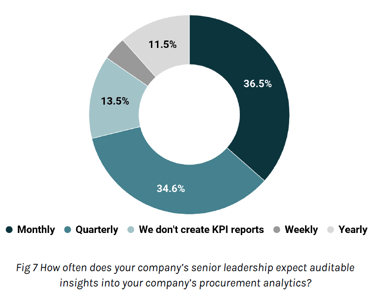
When AP and procurement are closely linked, it can improve accuracy, efficiency, cost control and better supplier relationship.
AP automation here plays a pivotal role in auditable insights. It can help AP professionals provide their senior leaders with actionable reports to understand their company's overall financial environment.
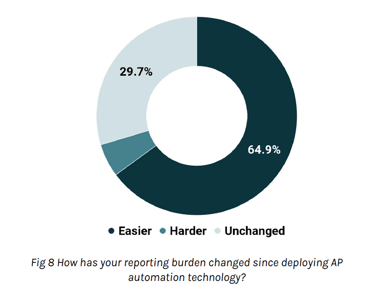
65.8%+ of companies have seen a decrease in burden on reporting since deploying AP automation technology, however, 29.7% stated no changes in ease of reporting. This brings into question whether AP professionals are trained adequately in using the technology provided for reporting, or if most of these companies’ software provides the required reporting functionalities.
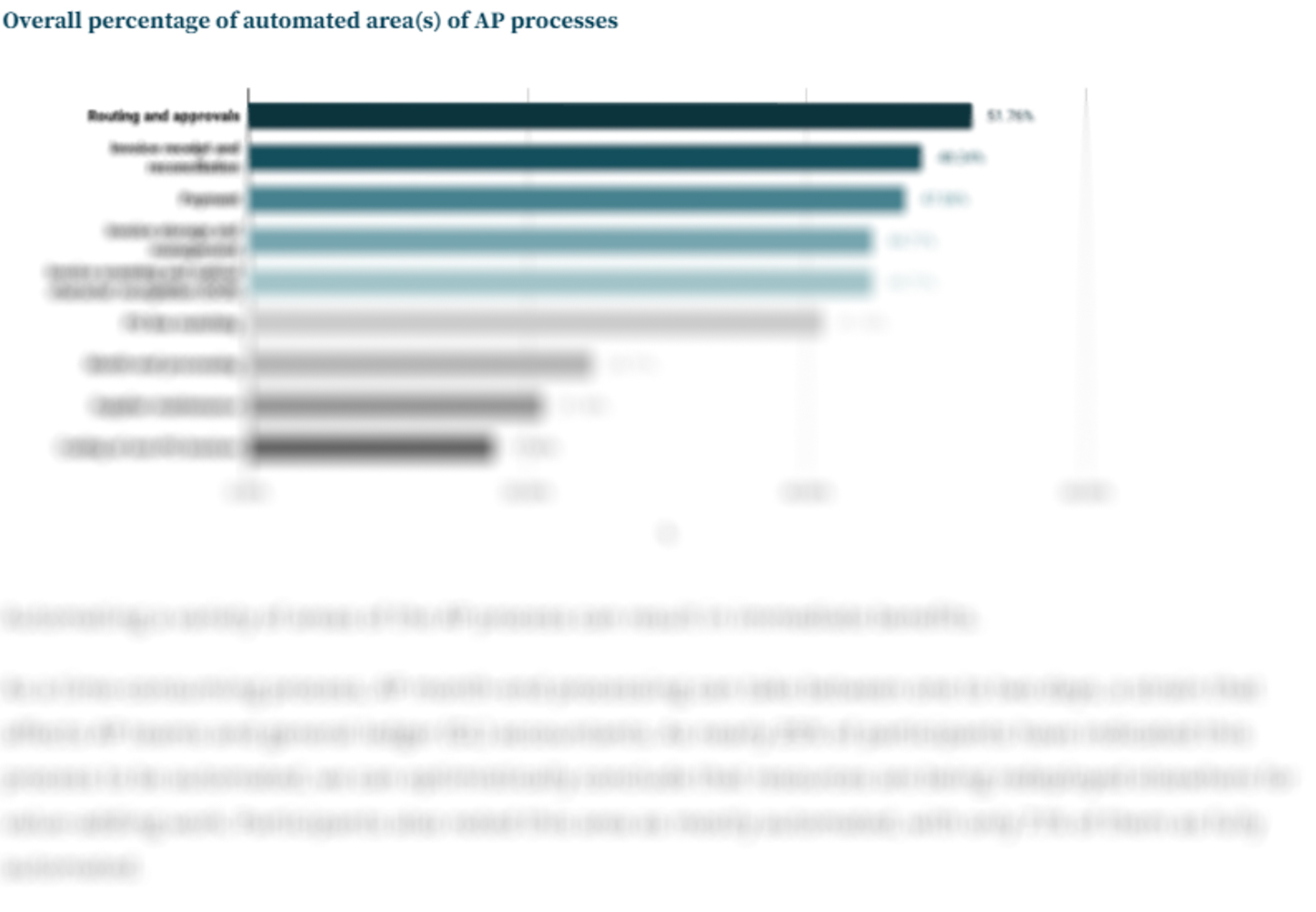
1 "Finance Effectiveness Benchmark Report 2019: PwC." https://www.pwc.com/us/en/services/consulting/finance/finance-effectiveness-benchmark-study.html.
2 "8 Benefits of Document Imaging & OCR" https://www.ascendsoftware.com/blog/8-benefits-of-document-imaging-for-healthcare.
3 "5 Ways to Cut Your AP Processing Time in Half." https://www.ascendsoftware.com/blog/5-ways-to-cut-your-ap-processing-time-in-half.
4 "Creating a Vision for Accounts Payable: The Strategic ...." https://www.financialexecutives.org/FEI-Daily/July-2020/Creating-a-Vision-for-Accounts-Payable-The-Strate.aspx.
Want to read the rest? Fill out this form to access the full report including insights on future implications and trends that boost efficiencies in AP processing and more.
Additional insights: